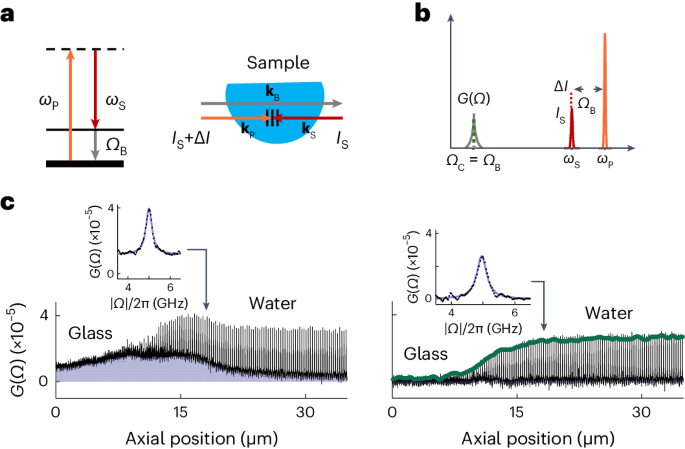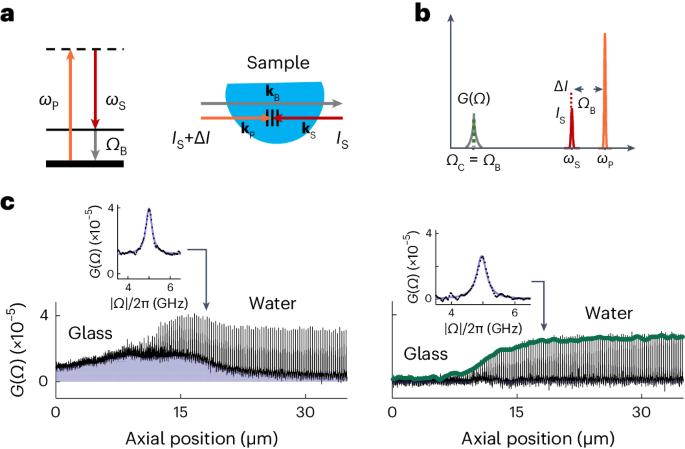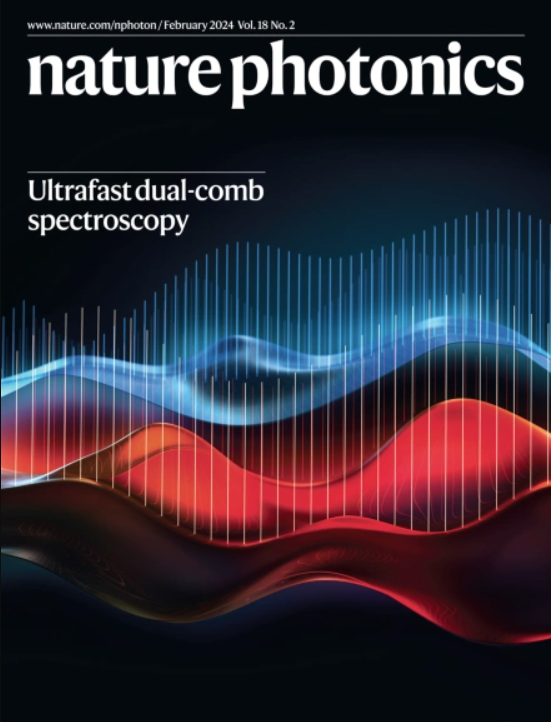Brillouin gain microscopy
IF 32.3
1区 物理与天体物理
Q1 OPTICS
引用次数: 0
Abstract
Optical imaging techniques with mechanical contrast, including passive microrheology, optical coherence elastography and Brillouin microscopy, are critical for material and biological discovery owing to their less perturbative nature compared with traditional mechanical imaging methods. An emerging optical microscopy approach for mechanical imaging is stimulated Brillouin scattering microscopy, which has been shown to be useful for biomechanical imaging with high sensitivity and specificity. However, the excitation energy used is high and the temporal resolution remains limited by the need to acquire full spectra. Here we develop Brillouin gain microscopy that detects the Brillouin gain at a specific mechanically contrasting frequency corresponding to a Brillouin acoustic-vibrational mode of interest in the sample. Brillouin gain microscopy affords a 200-fold improvement in temporal resolution compared with stimulated Brillouin scattering microscopy, down to 100 μs at excitation energy as low as 23 μJ. Using Brillouin gain microscopy, we demonstrate cross-sectional, all-optical mechanical imaging of materials as well as of the structure and dynamics in living systems with low excitation energy and at high temporal resolution. By measuring the Brillouin gain only at mechanical frequencies of interest, Brillouin gain microscopy enables Brillouin imaging with a temporal resolution of 100 µs with excitation energies of 23 µJ on biological samples.


布里渊增益显微镜
与传统的机械成像方法相比,具有机械对比度的光学成像技术(包括被动微流变学、光学相干弹性成像和布里渊显微镜)扰动较小,因此对于材料和生物发现至关重要。受激布里渊散射显微镜是一种新兴的机械成像光学显微镜方法,已被证明可用于生物机械成像,具有高灵敏度和特异性。然而,由于需要获取全光谱,因此使用的激发能量较高,时间分辨率仍然有限。在这里,我们开发了布里渊增益显微镜,它可以检测与样品中感兴趣的布里渊声振模式相对应的特定机械对比频率的布里渊增益。与受激布里渊散射显微镜相比,布里渊增益显微镜的时间分辨率提高了 200 倍,在激发能量低至 23 μJ 的情况下,时间分辨率可达 100 μs。利用布里渊增益显微镜,我们展示了以低激发能量和高时间分辨率对材料以及生命系统的结构和动力学进行横截面全光学机械成像。
本文章由计算机程序翻译,如有差异,请以英文原文为准。
求助全文
约1分钟内获得全文
求助全文
来源期刊

Nature Photonics
物理-光学
CiteScore
54.20
自引率
1.70%
发文量
158
审稿时长
12 months
期刊介绍:
Nature Photonics is a monthly journal dedicated to the scientific study and application of light, known as Photonics. It publishes top-quality, peer-reviewed research across all areas of light generation, manipulation, and detection.
The journal encompasses research into the fundamental properties of light and its interactions with matter, as well as the latest developments in optoelectronic devices and emerging photonics applications. Topics covered include lasers, LEDs, imaging, detectors, optoelectronic devices, quantum optics, biophotonics, optical data storage, spectroscopy, fiber optics, solar energy, displays, terahertz technology, nonlinear optics, plasmonics, nanophotonics, and X-rays.
In addition to research papers and review articles summarizing scientific findings in optoelectronics, Nature Photonics also features News and Views pieces and research highlights. It uniquely includes articles on the business aspects of the industry, such as technology commercialization and market analysis, offering a comprehensive perspective on the field.
 求助内容:
求助内容: 应助结果提醒方式:
应助结果提醒方式:


